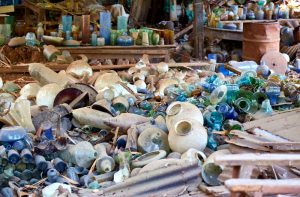 Nagar Glass Factory in Myanmar
Nagar Glass Factory in Myanmar
The Nagar Glass Factory is a paradise for treasure hunters. The winding path through the trees will lead you into an overgrown wilderness at the end of which you’ll find the remains of this forgotten glass factory, one of Yangon’s best kept secrets. The factory was opened in 1948 by a master glass craftsman and his wife. The factory was left to their family of five daughters and two sons who made the factory famous for its hand blown designs. The factory, its kilns and most of its machinery were destroyed in the 2009 cyclone, leaving behind an endless amount of glassware scattered across the grounds. What you will found now are piles of wine glasses, water jugs, dessert bowls, fruit bowls, carafe’s and wine stoppers, in blues, browns, greens and plums. The majority of the glass is hand blown, the rest formed in glass molds. No glass has been produced since the cyclone, but one machine still runs to smooth the edges of the cut glass. While your items are being cleaned and wrapped, lend an ear to the owners who seem to have more stories than glassware.
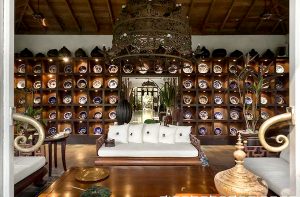 Exclusive Lunch at Mangosteen Mansion
Exclusive Lunch at Mangosteen Mansion
Mrs. Claudia Saw Lwin’s private mansion hosts lunchtime guests in the beautiful region of the Golden Valley. She is a passionate ambassador of Myanmar cuisine and has contributed to many projects, including an excellent cookbook titled, ‘The Food of Myanmar’. Her private collection of ancient lacquerware is artfully displayed throughout the house. There is also a boutique selling custom-made furniture and objets d’art for home decoration. Using a multitude of resources such as teak and other hardwoods, bamboo, sea shells and metals such as brass, copper, gold and silver leaf, her team undertakes continuous research and experimentation to improve finishing, general quality and originality of ideas.
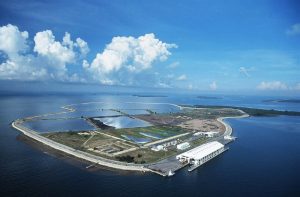 Singapore’s Trash Island
Singapore’s Trash Island
Pulau Semakau is an offshore landfill site used for waste disposal in Singapore. A visit here shows how waste management is conducted, and the real challenges that Singapore faces. Each year only a limited number of visitors are allowed on this educational trip which also includes the chance to see local marine life and admire the contrasting landscape. The tour lasts approximately two hours and government agency approval is required for visitations.
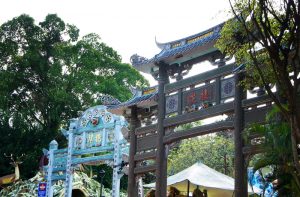 Red Brick Road of Haw Par Villa
Red Brick Road of Haw Par Villa
Haw Par Villa, formerly known as Tiger Balm Gardens, was founded in 1937 and built by Mr Aw Boon Haw for his brother Aw Boon Par. The park was originaly named after the Tiger Balm medical ointment. Trademark attraction as this cultural park is home to over 1000 statues and 150 dioramas depicting Chinese folklore and the famous Ten Courts of Hell. The park has a signature red brick road, leading visitors through a majestic archway toward Chinese classics such as ‘Journey to the West’ and ‘Eight Immortals’. Tigers, leopards and dragons lurk in corners. Rolling hills and caves evoke contemplation and reflection. Elsewhere in the park animals of all shapes and sizes beckon: goats, pandas, rabbits, gorillas, giant lobsters, even a crab-lady, the list goes on.
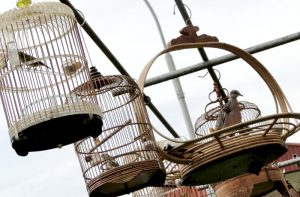 The Love for Birds
The Love for Birds
Discover a very special corner of Singapore that is a real hit for bird lovers. The Kebun Baru Birdsinging Club (KBBC) facility is the largest bird singing and display arena in the country and one of the largest of its kind in Southeast Asia. The club is surrounded by lush green hills and broad-canopy raintrees with wrought-iron benches, food outlets and a market all on location. The area not only attracts bird lovers, but also casual local visitors who come to enjoy the sound of birdsong. Every morning as early as 6am, merbok or zebra doves are hoisted up 20ft high poles for training using a simple pulley system – and with more than 1000 cages, it is quite a spectacle.
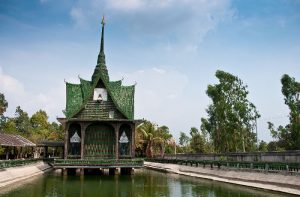 Temple of Beer Bottles
Temple of Beer Bottles
In the Khun Han district of Sisaket Province in northeast Thailand, stands a very unique temple made from ‘colorful beer bottles’ donated by local villagers. The name of the temple is Wat Phra Maha Chedi Kaew, or simply known as the ‘Temple of beer bottles’.
In 1984, Buddhist monks in Sisaket province were keen to recycle more while at the same time save money when building temples. They began to recycle glass beer bottles by decorating cubicles with them. Many beer bottles were donated over the years from villagers and they soon became the main material for building parts of temples such as entrances, walls, assembly halls, pavilions and bell towers.
The temple is the first and largest glass bottle temple in Thailand. It is a place of serene quiet and peace, with few tourists even knowing of its existence.
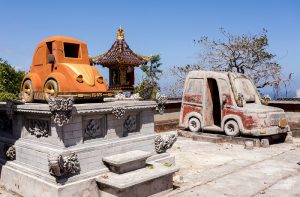 Nusa Penida’s Car Temple
Nusa Penida’s Car Temple
Pura Paluang Temple is easily one of the most unique venues a person can visit in Bali. It is often called the ‘Car Temple’, or ‘pura mobil’ by locals and features shrines in the form of a house, and cars. It’s one of the must-see attractions for those travelling to the southwestern coast of Nusa Penida, not far from the famous Kelingking Beach, with spectacular views of the island’s rugged limestone cliffs to enjoy.
Pura Paluang Car Temple is located within the community of Sebun Ibus in the Karangdawa village of Nusa Penida. Overlooking the Indian Ocean, it is built of white sandstone and the inner sanctum features a shrine built to resemble a small house between two cars – a jeep and a VW beetle – carved out of stone. Locals from the village have no account of how or why the temple was originally built, and claim that it stood long before there were any cars in Indonesia. To add to the mystery, locals claim to hear the sounds of car engines coming from the site at night!